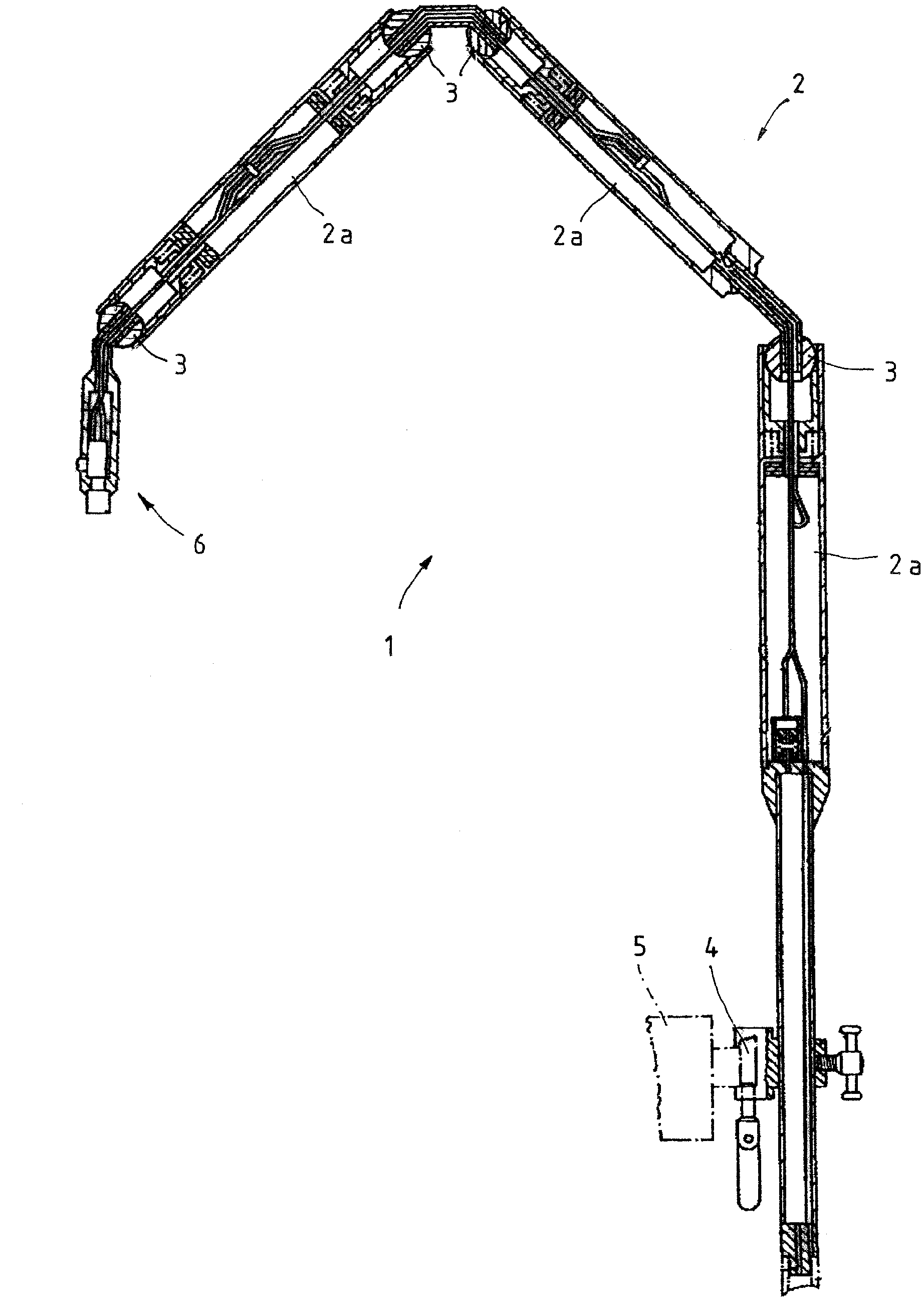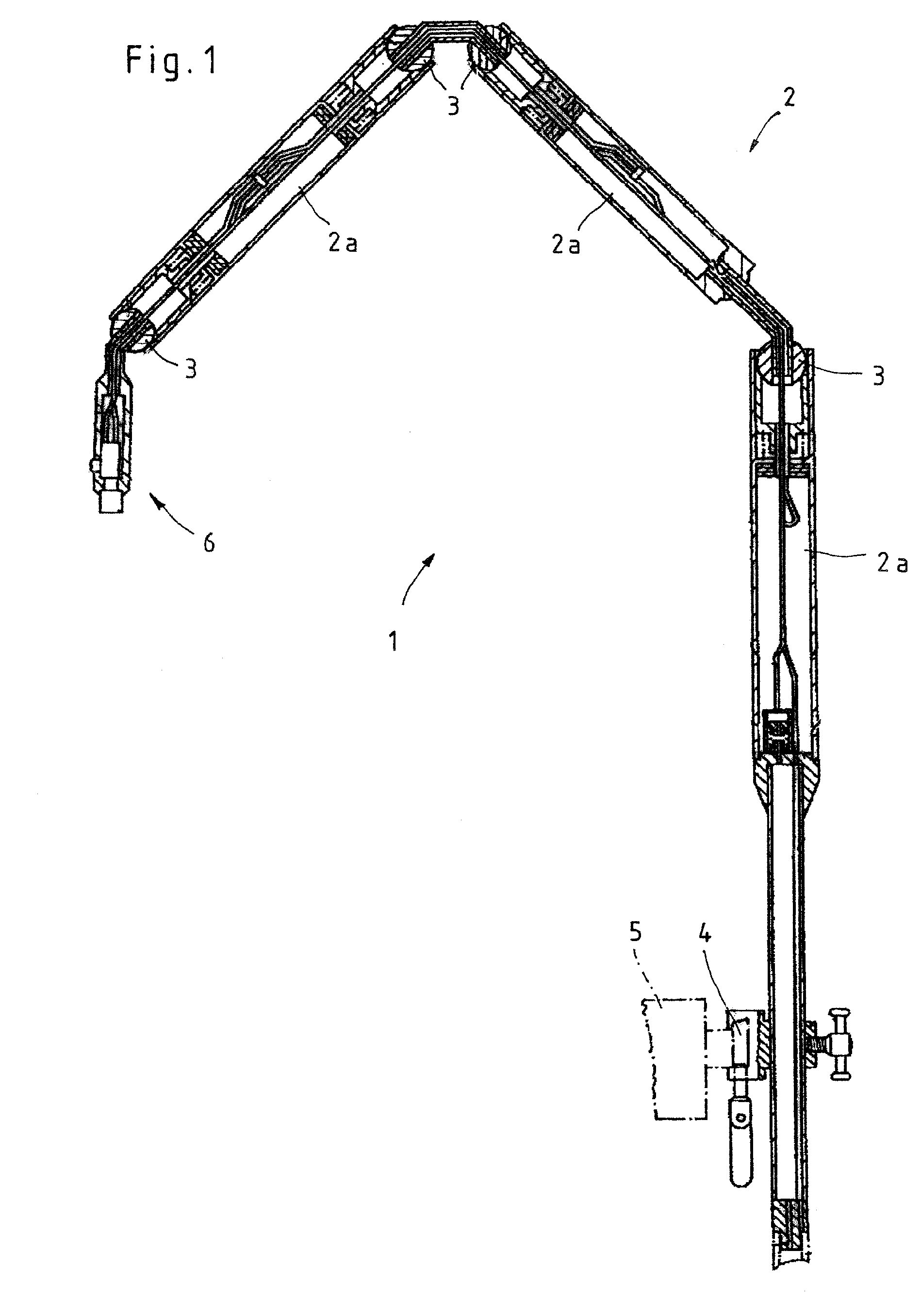Holding device for medical purposes
a technology for holding devices and medical devices, applied in the direction of applications, machine supports, surgical instruments, etc., can solve the problems of requiring extreme precision in manufacturing wheel sprockets, germ cells leading to soiling, etc., and achieve the effect of increasing the free movement of the carrier arm and precise positioning of the medical instrumen
- Summary
- Abstract
- Description
- Claims
- Application Information
AI Technical Summary
Benefits of technology
Problems solved by technology
Method used
Image
Examples
Embodiment Construction
[0035]The first illustration (FIG. 1) shows a holding device for medical purposes according to the state of the art. This holding device 1 consists essentially of a carrier arm 2 bearing several carrier arm members 2a, where the individual carrier arm members 2a of the carrier arm are connected to one another by joints 3 that can rotate with respect to one another.
[0036]Holding devices 1 of this type are often required in carrying out surgical procedures in order to hold medical instruments of many types such as retractors, video cameras, or endoscopes in a particular position for an extended period. As a result of the jointed configuration of the holding device 1 it is possible for the surgeon to position the medical instrument precisely and to secure the assumed position of the holding device 1 by blocking the joint 3 or the joints 3. In addition to endoscopic surgery, such holding devices 1 are also applied in open surgery.
[0037]In the area of its proximal end, the carrier arm 2 ...
PUM
 Login to View More
Login to View More Abstract
Description
Claims
Application Information
 Login to View More
Login to View More - R&D
- Intellectual Property
- Life Sciences
- Materials
- Tech Scout
- Unparalleled Data Quality
- Higher Quality Content
- 60% Fewer Hallucinations
Browse by: Latest US Patents, China's latest patents, Technical Efficacy Thesaurus, Application Domain, Technology Topic, Popular Technical Reports.
© 2025 PatSnap. All rights reserved.Legal|Privacy policy|Modern Slavery Act Transparency Statement|Sitemap|About US| Contact US: help@patsnap.com



